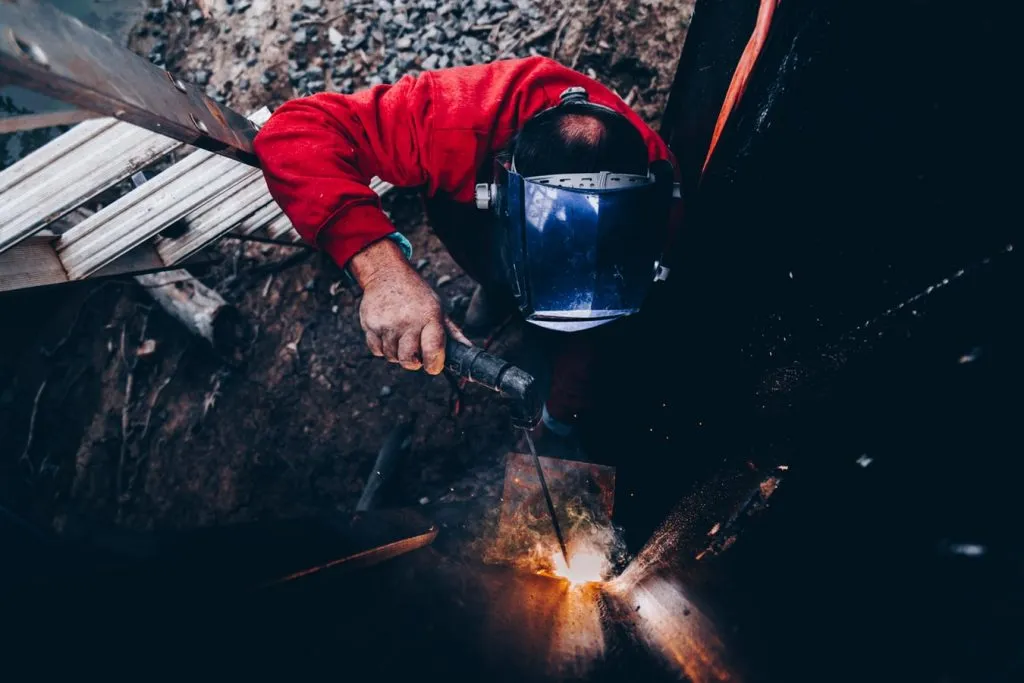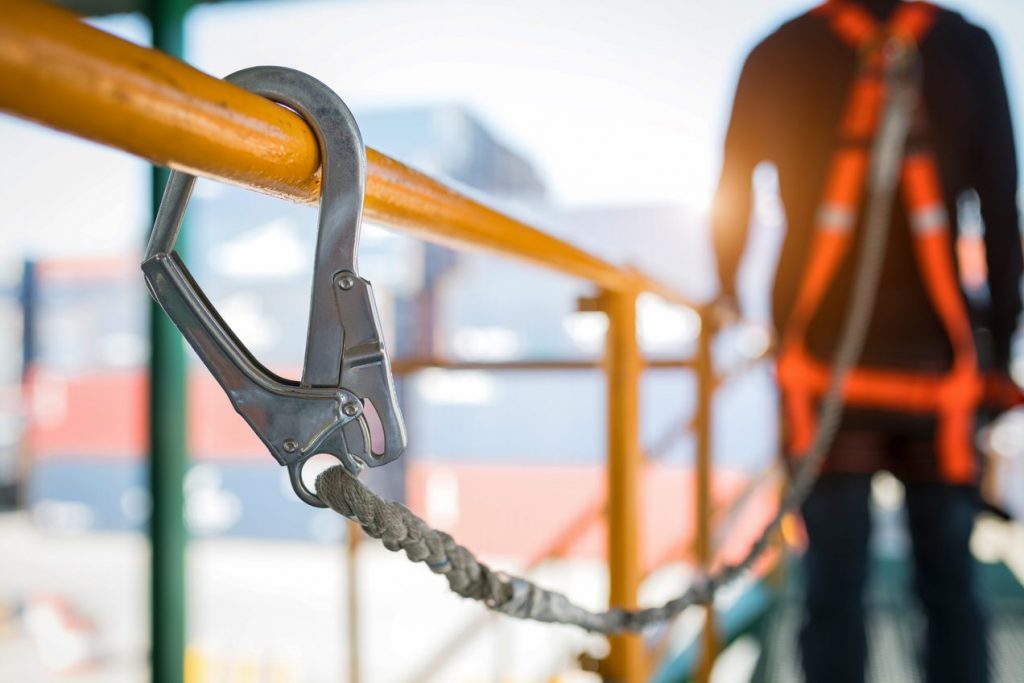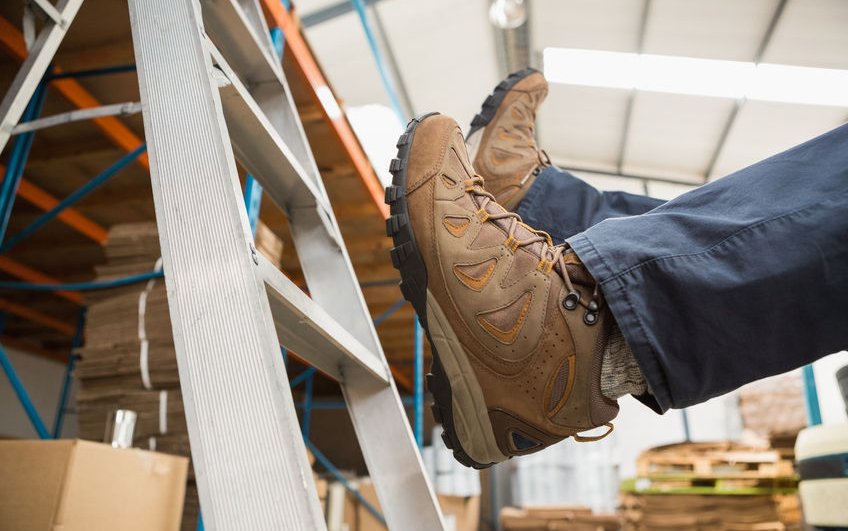Falls from height are one of the leading causes of workplace fatalities and injuries, accounting for 40 fatalities in 2018/19, and employers face record fines for failing to implement effective controls.
A recent court judgment has shown just what is at stake when height work is not safely carried out.
What happened?
The court heard that a railway maintenance worker fell 14ft from a ladder while cutting back vegetation. The contractor had started work painting viaduct arches without a safety briefing. He was then told to climb a ladder and cut back branches so that painting could continue. To grasp the branches, the worker twisted and reached across but, in doing so, the ladder gave way.
His injuries included a broken collarbone, 11 broken ribs and a punctured lung.
An investigation by the Office of Rail and Road (ORR) found the employer had failed to:
- Inspect the site adequately. The company’s health and safety manager did not make a site visit.
- Plan the work at height properly.
- Supervise the work appropriately.
Wrong ladder use
The court was told that the use of ladders was inappropriate for the task and exposed workers to the risk of falling. Failing to assess the site properly meant that the right equipment was not used, such as a tower scaffold or mobile elevated work platform – equipment specified in the work method statement.
Lanes Group PLC pleaded guilty to an offence under the Work at Height Regulations 2005.
It was fined £500,000 with £9,896 in costs.
Safety campaign
The Ladder Association, a not-for-profit organisation dedicated to promoting the safe use of ladders, has responded to the prosecution by urging all those responsible for managing the safe use of ladders to put ladder training at the top of their height safety agenda.
Dennis Seaton, Chair of the Association’s Training Committee said: “There are many situations where a ladder can be the right solution but they shouldn’t automatically be your first choice. It’s one of the main reasons we launched our ‘Get a Grip’ on ladder safety campaign with the clear message – When it’s right to use a ladder, use the right ladder and get trained to use it safely”.
When considering work at height, most people’s first instinct is to use a ladder. However, different equipment may be more suitable. For example, if a task requires using both hands while standing at height, a standard A-frame, step ladder or extension ladder should not be used. A platform-ladder, mobile stairs, ramp or long handheld tool should instead be used – all of which are safer alternatives to a ladder. Many employers recognise the dangers of ladders and have implemented “ladders last” policies as a way to reduce workplace injuries.
Training staff in safe working practices
Training is said to be an important contributor in keeping people safe when working at height. The Ladder Association stress training is more than just about using the ladder safely – it’s about helping people understand:
- When it is right to use a ladder;
- When not to use a ladder; and
- How to choose the right ladder.
7 ladder safety tips employers should know
1. Take a close look at the ladder
Always check the condition of the ladder before use. This means checking the ladder’s steps, rungs and feet for damaged parts. Tighten any loose fastenings or screws. With a metal ladder, make sure the slip-resistant feet are intact.
Clean your ladder after use to make sure dirt, which can become slippery later, does not build up.

2. Install on a stable surface
Make sure your ladder is securely installed on firm and level ground. Never place it on a slippery, uneven, or unstable surface. Also, never lean it against an unstable surface – have a strong upper resting point – not plastic guttering!
Never use ladders in windy or rainy conditions. Even if the weather seems calm when first used, be mindful of changes during the work.
3. Use the right ladder for the task
Always pick the right ladder for the job. Make sure the duty rating of the ladder is greater than your weight plus the weight of any tools, supplies or other objects that are to be carried. The ladder should also be of a sufficient height that you do not have to use the top steps – never stack your ladder on top of another object for extra height.
Always read the ladder’s safety information.
Metal ladders must never be used when handling power tools as electrical shock may occur. Instead, use a non-conductive insulated ladder. This rule also applies to the use of wet wood ladders.
4. Make people aware of the ladder
Consider setting up warning signs to make sure people are fully aware ladder work is going on. You should also make sure ladders are not used in a way that endangers others.
Exercise extreme caution when using a ladder in a busy area, as its at risk of being bumped by a person or vehicle. If a ladder must be used in a heavily trafficked area, always barricade the ladder, use a spotter, post signs and make the ladder area highly visible.
Ladder work should be of short duration, i.e. a maximum of 30 minutes.
5. Keep within the rails
Explain to staff the the belt buckle rule – keeping your belt buckle positioned between the ladder’s side rails at all times. This ensures that your centre of gravity is maintained over the ladder when climbing and working.
Remind staff to avoid leaning or overstretching for something that’s away from the ladder as this, as in the above case, may cause a fall. Before climbing, make sure employees have all the tools they will need. Consider a simple tool hoisting system, for example, use a rope tied to a bucket.
6. Follow a proper set up
- Never have more than one person on a ladder, unless it is specifically designed to hold two people.
- Never place a ladder in front of a door that opens towards it. If this is unavoidable, make sure that the door is locked, guarded or altogether blocked.
- Be sure to place a straight ladder at a 75-degree angle or 1ft away from the surface it is resting against for every 4ft of the ladder’s height. Open step ladders completely before you climb on them.
- If the work cannot be reached easily, it’s important to take the extra time to reposition the ladder or to get a different ladder or tool for the job. Ladders must never be shifted while in use.
7. Exercise caution when in use
Don’t allow staff to become sloppy or take risks. Make sure they are mindful of what they are doing every time they step on a ladder. Remind staff to:
- Always grip the ladder when climbing up and getting down.
- Use towlines or a tool belt to keep hands free.
- Take care to maintain their balance.
- Never take any unnecessary risks by overreaching.
To minimise the chances of falling or slipping, it’s recommended to use “three points of contact”. This means that workers should remain facing the ladder and have two hands and one foot, or two feet and one hand, in contact with the ladder. This will help to maintain a steady grip.
Did you know? About 20% of ladder injuries occur when users miss the bottom step coming down.
Instruct staff not to work off the top three rungs as this provides a handhold.
Did you know? Traditional step ladders are unsafe if the user works from the top two steps.
Workers should wear clean, slip-resistant shoes. Leather soled shoes are inappropriate for climbing ladders as they tend to slip. Most falls from ladders occur as a result of improper footwear, haste, sudden movement, lack of attention, ladder damage or the climber’s physical condition – advise workers to stay off ladders altogether if they feel tired or dizzy, or are prone to losing their balance.

Nick Wilson
Director of Health & Safety Services
Expert Comment
Ladders and stepladders are not banned under health and safety law. In fact, they can be a sensible and practical option for low-risk, short-duration tasks. However, to use a ladder, you need to be competent, i.e. have had instruction and understand how to use the equipment safely. Having decided that a ladder is an appropriate means of access, then by following our ladder safety tips, you can complete the work safely.
If in doubt, Ellis Whittam’s experienced Health & Safety Consultants can offer professional risk-reducing guidance. Call 0345 226 8393 for support.







